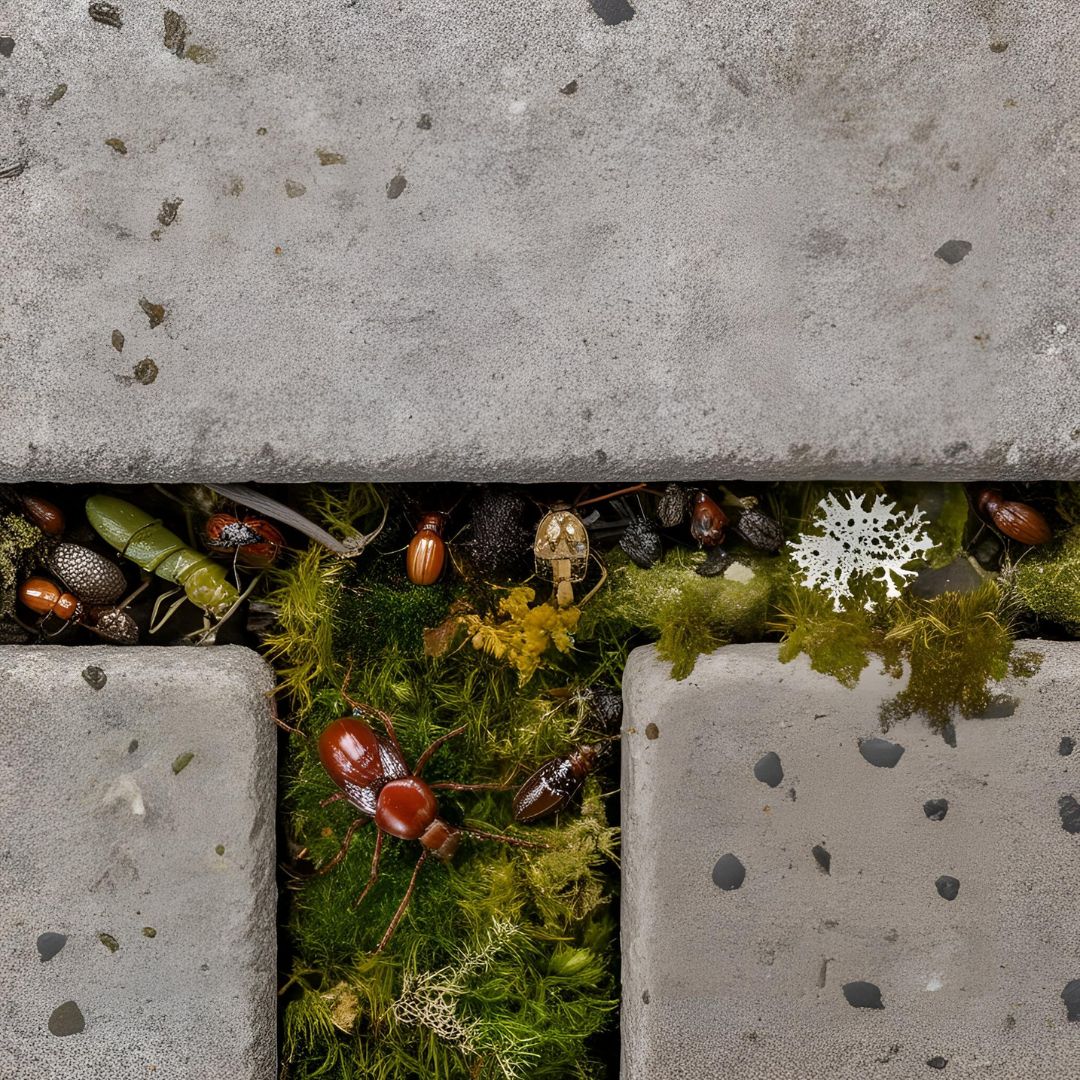Most people walk hurriedly through city sidewalks without realizing that, beneath their feet, an entire universe is at work. Between cracks, under forgotten stones, or among rubble leaning against walls, lies a nearly invisible yet vital ecosystem that supports urban environmental balance. Within this microcosm, lichens, fungi, small insects, and microorganisms coexist in a network of complex and often overlooked interactions. While frequently ignored, the study of these urban micro-habitats has gained growing attention from biologists, ecologists, and environmental educators.
Urban Lichens: The Sidewalks’ Bioindicators
One of the most noticeable elements in this ecosystem is the lichen. A symbiotic combination of fungi and algae, these colorful structures grow on stones, walls, or tree trunks and reveal a lot about air quality and humidity. Highly resilient, lichens serve as bioindicators—disappearing in polluted areas and returning when the environment becomes more balanced. In cities where green areas are preserved, a surprising variety of shapes and colors can be observed, especially in shaded, damp corners.
Fungi and Bacteria: Invisible Recyclers
Just beneath the stone surfaces, the constant moisture provides ideal conditions for fungi and bacteria to thrive. These organisms play essential roles in breaking down organic matter, even in urban settings. When dry leaves, animal droppings, or food scraps accumulate near sidewalks and walls, it is this microscopic life that begins transforming waste into nutrients. Although barely visible to the naked eye, urban fungi are part of a recycling web that quietly and efficiently keeps cities cleaner.
Insects and Arthropods: The Soil’s Tiny Engineers
The soil under the stones also hosts a rich diversity of small insects and arthropods. Pill bugs, ants, centipedes, and mites are just a few examples of creatures that rely on these microstructures for shelter and survival. They seek refuge from direct sunlight, dehydration, and predators. Moreover, they help aerate the soil, control pests, and even serve as food for larger animals, such as urban birds. This natural dynamic takes place daily, right in front of us—whether we notice it or not.
Cracks and Crevices: Unexpected Natural Refuges
It’s fascinating to see how even the most unlikely places become biodiversity hotspots. A crack in the pavement might trap enough rainwater for moss or small wind-blown seeds to take root. These open spaces, combined with organic debris in the crevices, create true urban refuges. In certain regions, researchers have documented dozens of insect species living exclusively in these conditions, specially adapted to the harsh city environment. This ecological resilience proves that life always finds a way—even in the most improbable scenarios.
Urban Microorganisms: The Power of Invisible Life
Beyond visible organisms, microorganisms make up a significant portion of life under urban stones. Bacteria, protozoa, and microalgae continuously interact, creating biochemical cycles essential for soil and air balance. Some bacteria help control pests, while others support nitrogen fixation—an essential process for plant growth, even on sidewalks and vacant lots. Thus, the urban microbiota is not just abundant but also deeply functional.
Sustainable Cities and Invisible Ecosystems
This knowledge also has practical applications in urban planning. Sustainable city projects are increasingly incorporating the concept of “invisible ecosystems” into landscape design. Instead of eliminating moss and fungi from sidewalks, some initiatives preserve these natural formations as part of the city’s ecological heritage. Public outdoor spaces, for example, can be designed to respect colonies of lichens and insects, offering hands-on environmental education to everyday citizens.
Environmental Education with a Lens: Discovering the Incredible
In educational settings, using magnifying glasses or macro lenses to observe life beneath stones has proven to be a powerful way to spark curiosity in children and teens. School programs that include urban field trips help students see firsthand how biodiversity exists even in places considered lifeless. Watching a mite crawl between grains of sand or a fungus colony grow on debris transforms how students perceive nature and strengthens their sense of ecological responsibility.
The Aesthetics of Urban Biodiversity
Even from an artistic perspective, this hidden world is captivating. The geometric forms of lichens, the symmetry of small insect wings, or the intricate webbing between rocks are natural masterpieces. When photographed with proper equipment, these details reveal stunning imagery that highlights the hidden beauty of urban microscopic life. These images, when shared on social media or displayed in educational exhibits, can shift public perception and increase awareness about the value of protecting these miniature habitats.
Protecting the Unseen Is Also Preservation
Taking care of urban micro-habitats is a way of honoring life in all its forms. In an age of climate change and rapid urbanization, paying attention to what’s beneath the stone goes beyond scientific curiosity—it’s a conscious act of respect for the planet’s diversity and resilience. Understanding these tiny ecosystems can serve as a gateway to broader conservation efforts and help city dwellers feel more connected to the nature around them.





